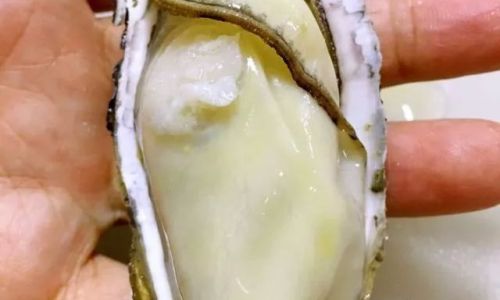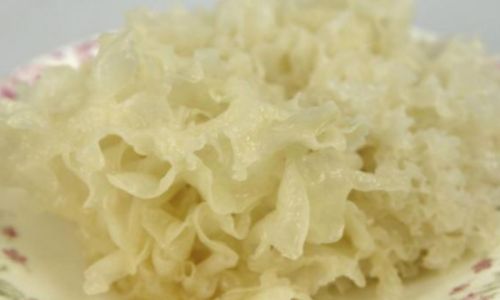Introduction

Oysters, known for their delicate flavor and rich nutritional profile, are a culinary delight enjoyed worldwide. Whether raw on the half-shell, baked with cheese, or incorporated into gourmet dishes, oysters offer a unique taste experience that is hard to replicate. However, preserving their freshness is crucial to maintaining their exquisite quality and ensuring a safe consumption experience. This comprehensive guide will delve into the various methods for preserving fresh oysters, focusing on key aspects such as storage conditions, handling techniques, and understanding the shelf life of these delicate mollusks.
Understanding Fresh Oysters
Before discussing preservation methods, it’s essential to understand the biology and characteristics of oysters. Oysters are bivalve mollusks that live in marine or brackish environments, filtering water and feeding on algae and organic particles. Their shells provide protection, while the inside, known as the oyster’s meat or flesh, is what we consume.
Fresh oysters are typically harvested from the ocean floor or from oyster farms and are sold live. They are highly perishable and require specific conditions to stay alive and fresh. Once harvested, oysters continue to respire and consume oxygen, which means they need to be kept in an environment that supports their life processes until consumption.
Storage Conditions for Fresh Oysters
-
Temperature Control
The most critical factor in preserving fresh oysters is temperature control. Ideally, oysters should be stored at a temperature between 40°F and 50°F (4°C and 10°C). This range mimics their natural environment and slows down their metabolic rate, extending their shelf life.
-
Refrigeration: The best way to maintain this temperature range is by storing oysters in a refrigerator. Ensure that the refrigerator’s temperature is set correctly and that oysters are placed on a bed of ice or in a container with ice packs to maintain a consistent low temperature.
-
Avoid Freezing: It’s crucial not to let oysters freeze. Freezing temperatures cause the oyster’s cells to rupture, leading to a loss of texture and flavor. If oysters are accidentally frozen, they should be discarded as they will not be safe to eat.
-
-
Humidity and Moisture
Oysters need to stay moist to prevent their shells from drying out and closing tightly, which can trap air and cause them to spoil faster.
-
Wet Storage: Store oysters in a container lined with a damp cloth or paper towels. The cloth or towels should be kept moist but not soaking wet to avoid excessive water accumulation that could promote bacterial growth.
-
Ventilation: Ensure that the storage container allows for some air circulation. A loosely covered container or one with ventilation holes is ideal.

-
-
Handling and Transportation
Proper handling is essential to prevent physical damage to the oysters and to maintain their freshness.
-
Gentle Handling: Oysters should be handled gently to avoid cracking their shells. Use a soft cloth or paper towels to cushion them during transportation.
-
Keep Cool: If transporting oysters, use a cooler with ice packs to maintain the desired temperature. Avoid exposing them to direct sunlight or extreme temperatures.
-
Preservation Methods
-
Live Storage
Live storage is the preferred method for preserving fresh oysters as it allows them to remain alive and in optimal condition for several days.
-
Refrigerated on Ice: As mentioned earlier, placing oysters on a bed of ice in a refrigerator is the standard method for live storage. Change the ice regularly to ensure a consistent temperature.
-
Oyster Bags: Commercial oyster bags designed for live storage can be used. These bags are breathable and help maintain the correct humidity levels.
-
Shell-on vs. Shucked: Always store oysters in their shells if possible. Shucked oysters (those that have been opened and the meat removed from the shell) have a much shorter shelf life and should be consumed immediately or preserved using different methods.
-
-
Shucked Oyster Preservation
If you need to preserve shucked oysters, several methods can be employed, but it’s important to note that their shelf life will be significantly shorter than live oysters.
-
Refrigeration in Airtight Containers: Place shucked oysters in an airtight container with their liquor (the natural juices inside the shell). Cover with a damp cloth or paper towel and store in the refrigerator. Consume within one to two days.

-
Freezing Shucked Oysters: While not ideal, shucked oysters can be frozen for longer-term storage. Rinse them thoroughly, pat dry, and place in a single layer on a baking sheet. Freeze until solid, then transfer to an airtight container or freezer bag. Use within three months for best quality. Note that frozen shucked oysters will have a different texture and flavor when thawed.
-
-
Canning and Pickling
For those interested in preserving oysters for extended periods, canning or pickling are options. These methods involve processing oysters in a way that eliminates harmful bacteria and allows for long-term storage.
-
Canning: Oysters can be canned using a pressure canner. This process involves packing oysters into jars, adding a brine or liquid, and processing at a high temperature to ensure safety. Canned oysters can be stored for up to a year.
-
Pickling: Pickling involves preserving oysters in a vinegar-based solution. This method adds flavor and can extend the shelf life of oysters for several months when stored in a cool, dark place.
-
Shelf Life and Quality Indicators
The shelf life of fresh oysters varies depending on the storage method and conditions. Live oysters stored correctly in a refrigerator on ice can last up to two weeks, but it’s best to consume them within a few days for optimal freshness. Shucked oysters have a much shorter shelf life and should be consumed within one to two days of being opened.
Quality indicators to look for include:
- Shell Condition: The shells should be closed or tightly sealed when tapped. If the shell gapes open and doesn’t close when touched, the oyster may be dead and should be discarded.
- Smell: Fresh oysters have a mild, briny smell. If they have a strong, unpleasant odor, they are likely spoiled.
- Appearance: The meat should be plump and moist. Shriveled or dry-looking meat is a sign of deterioration.
Conclusion
Preserving fresh oysters requires careful attention to temperature control, humidity, and handling. Live storage in a refrigerator on ice is the best method for maintaining their freshness and quality. For shucked oysters, refrigeration in airtight containers or freezing are options, although they will have a shorter shelf life and different texture when thawed. Canning and pickling offer long-term preservation options but alter the taste and texture of the oysters. By understanding these preservation methods and monitoring quality indicators, you can ensure that your fresh oysters remain delicious and safe to eat.
Remember, the key to enjoying fresh oysters is to consume them as soon as possible after purchase and to always handle and store them properly to maximize their shelf life and preserve their exquisite flavor.




0 comments